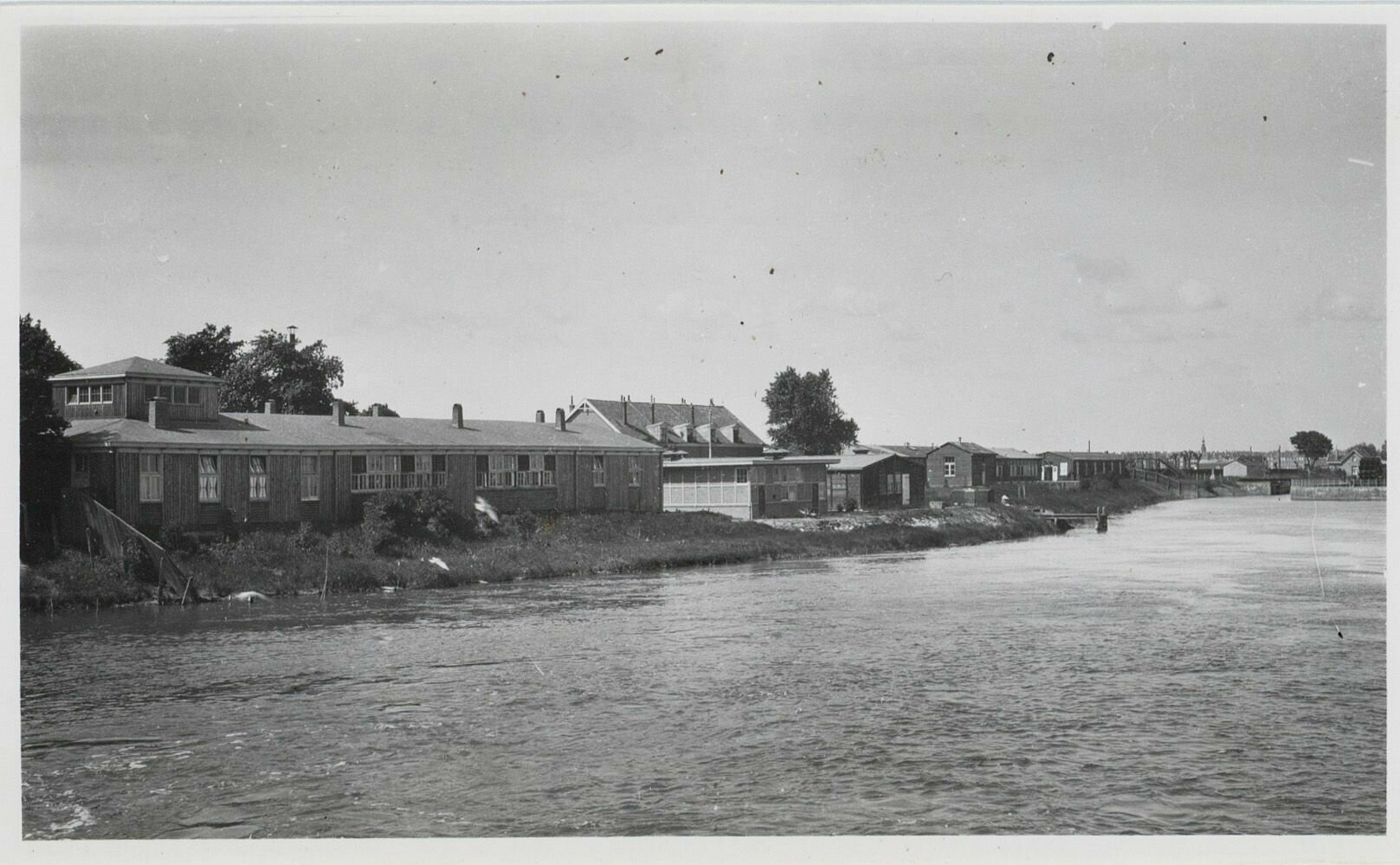Jewish Refugee Camp, Zeeburg Quarantine Institution
Internment camp where Jewish refugees were housed.

Quarantaine Inrichting Zeeburg, bij het Lozingskanaal, Amsterdam, 1922.
Copyright: Fotocollectie Stadsarchief Amsterdam / Foto: J. van Eck
From 1916 onwards, a quarantine facility for infectious patients was in use at the end of the Zeeburgerdijk. The sheds were empty in the early 1930s, but when refugees from Germany started arriving the following years, they were put back into use. This is how the Jewish Refugee Camp Quarantiane Institution Zeeburg came into being. The commander issued a strict Lager- und Dienstordnung on 8 January 1940.[1]
In January 1940, thirty-seven boys, who had previously been in the Gouda orphanage, stayed in one of the barracks.[2]
While waiting for his emigration visa application, Walter Holländer, Edith Frank's brother, stayed here for almost a year, from December '38 to December '39, after which he could leave by ship for the US.[3]
Herman and Herbert Wilp, two brother of whom a photo has been preserved from around 1941 showing them together with Anne Frank,[4] were also in Camp Zeeburg in December '38 and January '39.[5]
Footnotes
- ^ Nationaal Archief (NL-Ha-NA), Den Haag: Zorg voor Vluchtelingen uit Duitsland (BiZa / Vluchtelingen Duitsland), nummer toegang 2.04.58, inv. nr. 70: "Lager- und Dienstordnung", 8 januari 1940.
- ^ NL-HaNA, BiZa / Vluchtelingen Duitsland, 2.04.58, inv.nr. 70: Rapport 7 januari 1940, p. 1-2.
- ^ Stadsarchief Amsterdam (SAA), Dienst Bevolkingsregister, Archiefkaarten (toegangsnr. 30238): Archiefkaart W. Holländer.
- ^ Anne Frank Stichting, Anne Frank Collectie, reg. code A_AFrank_III_055.116.
- ^ SAA, Dienst Bevolkingsregister, Archiefkaarten (toegangsnummer 30238): Archiefkaarten Herman Wilp en Herbert Wilp. Voor het levensverhaal van beide broers, zie: Koblenz verbindet - Erinnerungskultur - Deportierte Kinder und Jugendliche aus Koblenz - Herbert Wilp.